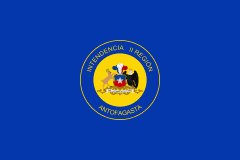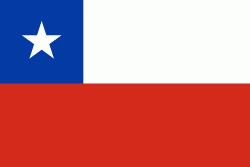Antofagasta Region (Región de Antofagasta)
 |
 |
Antofagasta's climate is extremely arid, albeit somewhat milder near the coast. Nearly all of the region is devoid of vegetation, except close to the Loa River and at oases such as San Pedro de Atacama. Much of the inland is covered by salt flats, tephra and lava flows, and the coast exhibits prominent cliffs.
The region was sparsely populated by indigenous Changos and Atacameños until massive Chilean immigration in conjunction with a saltpeter boom in the later 19th century. Most of the region was organised as Bolivia's only coastal territory until Chilean takeover in 1879 at the onset of the War of the Pacific.
Antofagasta's history is divided, as the territory itself, into two sections: the coastal region, and the highlands plateau or altiplano around the Andes. In pre-Columbian times, the coastline was populated by nomadic fishing clans of Changos Indians, of which very little is known due to very limited contact with the Spanish conquerors.
The inland section was populated by the Atacaman culture around the great dry salt lake Salar de Atacama, the Loa River basin, and valleys and oases across the altiplano, with the most important settlement being the village of San Pedro de Atacama.
The Atacaman culture was deeply influenced by Tiwanaku culture and later fell under Inca rule. The Atacamans harvested mainly corn and beans and developed trade as far as the Amazon basin and Pacific shores. The arrival of the Spaniards in the 16th century did not destroy the culture but transformed it deeply through the process of mestizaje, in which both cultures mixed. Under Spanish rule, Atacaman territory was placed under the administration of the Audiencia Real de Charcas, though it is disputed whether the Audiencia Real de Charcas was to administer only the inland portion or the coast as well. At the time of independence general Simón Bolívar integrated it into the new Republic of Bolivia, under the name of "Litoral Department". This decision was disputed by the Chilean Government and has been a source of conflict until present times. Chile claimed that according to the Uti possidetis of the Spanish crown, the coastal region belong to them and their territory bordered directly with Peru.
Chileans explorers such as Juan López and José Santos Ossa discovered rich nitrate and guano deposits which produced a massive Chilean colonization of the coastline. Friction between the new settlers from both countries grew until 1879 when the War of the Pacific erupted. Antofagasta was permanently annexed by the Chilean government at the end of the war.
Colonization by Chileans followed mainly from Norte Chico (the contemporary regions of Atacama and Coquimbo, also known as the III and IV regions), into the new territories of Antofagasta and Tarapacá, known as Norte Grande.
In the early 20th century the region became a significant base of Chile's union-organizing movements. It continued to depend economically on the nitrate-extraction industry until its replacement by copper mining. Two of the largest and richest open pit mines in the world are located inland from Antofagasta: La Escondida and Chuquicamata.
Map - Antofagasta Region (Región de Antofagasta)
Map
Country - Chile
Currency / Language
| ISO | Currency | Symbol | Significant figures |
|---|---|---|---|
| CLP | Chilean peso | $ | 0 |
| CLF | Unidad de Fomento | 4 |
| ISO | Language |
|---|---|
| ES | Spanish language |




















